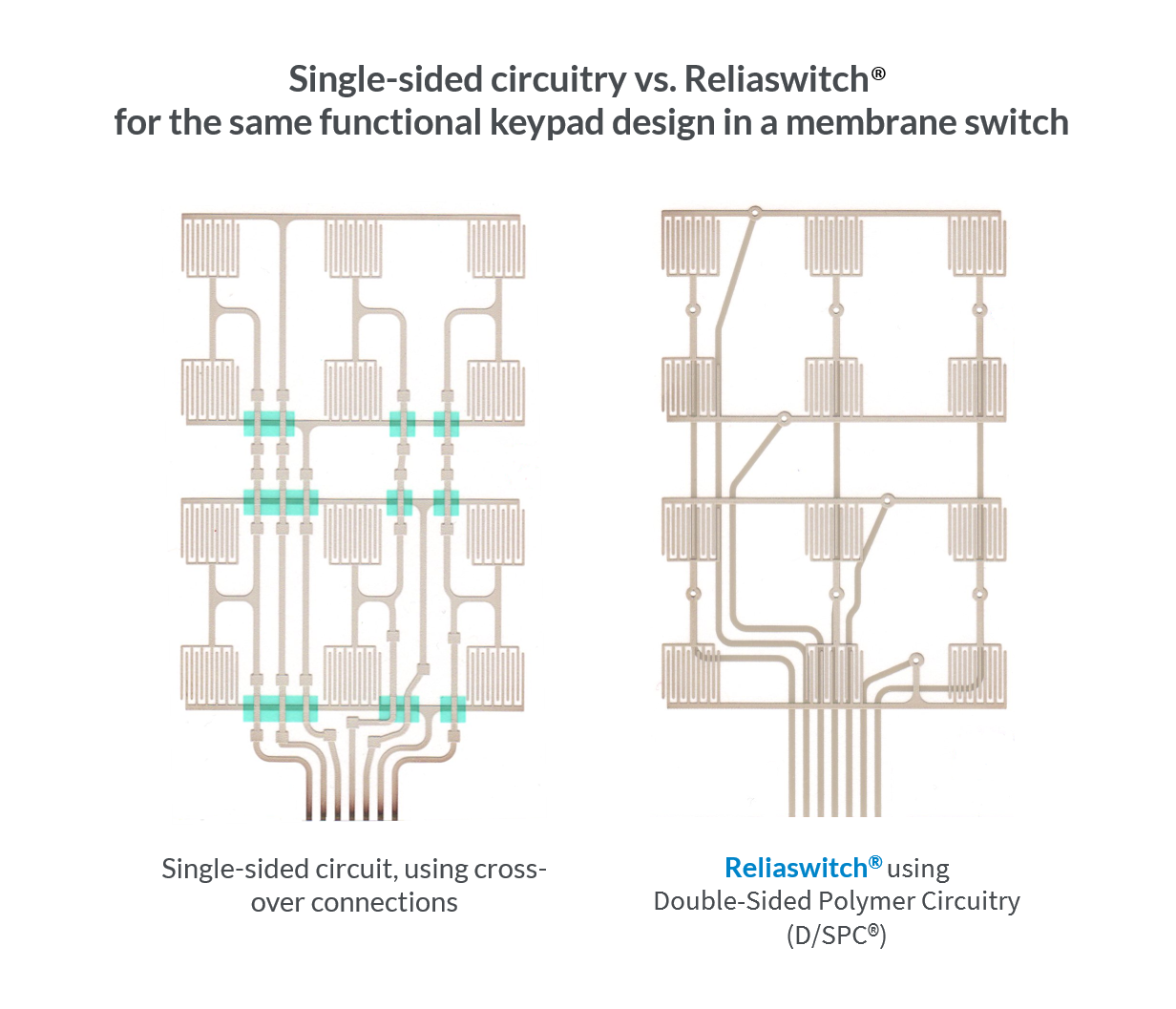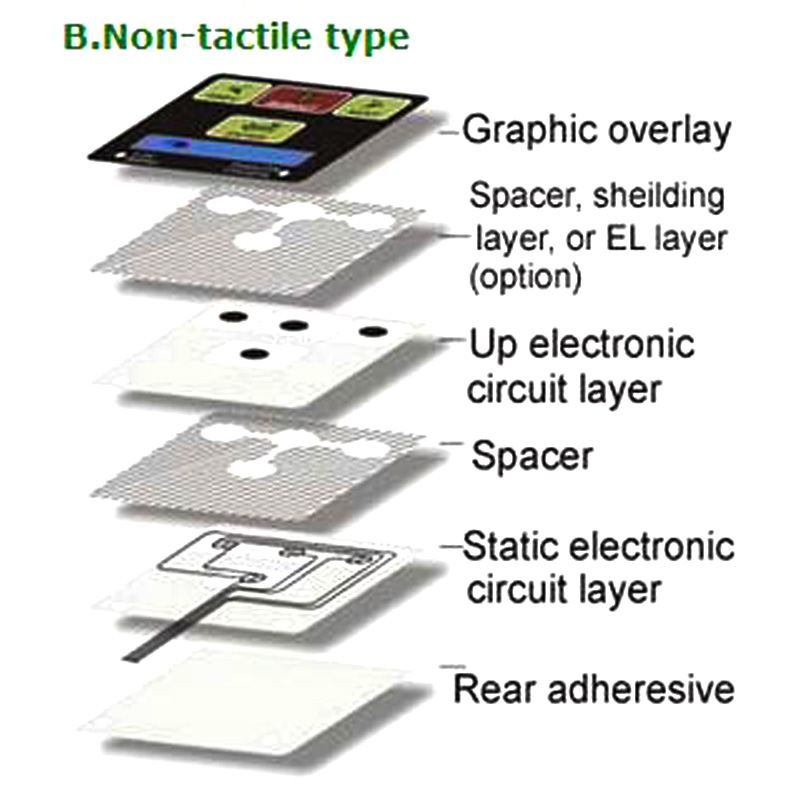The Manufacturing Refine Behind Membrane Switch: What You Need to Know
The production procedure behind membrane switches over combines careful style, product option, and quality control. It begins with recognizing the intricacies of membrane switch design and progresses via different phases, including product choices and printing methods. Each phase plays an essential duty in making sure functionality and resilience. However, the intricacies of layer building and the rigorous testing standards might expose understandings that are not quickly noticeable. What lies beyond these fundamental aspects?
Understanding Membrane Switch Over Design
Although membrane layer buttons might appear straightforward at initial glance, their layout involves elaborate considerations that guarantee capability and resilience. The style procedure starts with an extensive understanding of customer demands, including the interface's intended application and environmental variables. Ergonomics is an essential element, as the layout needs to help with simplicity of usage while guaranteeing that tactile feedback meets customer expectations.Moreover, the layering of components, such as graphic overlays, adhesive layers, and conductive traces, need to be exactly crafted. membrane switch. This layered arrangement not just affects the switch's responsiveness but also impacts its durability. Attention is offered to the sealing strategies used to secure versus wetness and dirt, which can jeopardize efficiency. In addition, layout factors to consider encompass looks, where color pattern and aesthetic clarity improve customer experience. Inevitably, the style of membrane layer switches balances performance, individual experience, and durability, ensuring that they meet the needs of different applications properly
Products Made Use Of in Membrane Switch Production
When choosing products for membrane layer button manufacturing, it is vital to ponder both efficiency and durability. The primary materials include polyester and polycarbonate movies, which offer versatility and strength. These movies are frequently covered with adhesive to assure appropriate bonding to substratums. Conductive inks, typically made up of silver or carbon, are essential for developing electric connections within the button, permitting reputable operation.Additionally, a safety layer, such as a tough coat, is often applied to improve scrape resistance and durability. The choice of backing product, such as acrylic or foam, can substantially affect the button's responsive feeling and overall customer experience. Various ecological elements, consisting of temperature level and humidity, should assist material selection to assure peak performance in specific applications. Eventually, the ideal mix of materials adds to the membrane switch's capability and life expectancy, making informed selections vital for manufacturers.
The Printing Process: Creating Graphics and Text
The printing process in membrane layer switch production plays a significant duty in producing top quality graphics and text. Numerous visuals style strategies are employed to guarantee aesthetic appeal and performance, while mindful ink choice techniques are important for resilience and performance. Understanding these elements is fundamental for attaining finest results in membrane layer button style.
Graphic Design Techniques
Graphic design methods play a crucial duty in the printing procedure of membrane buttons, as they specify just how graphics and message will ultimately appear on the last item. Reliable visuals style involves the calculated use formats, font styles, and colors to improve readability and visual appeal. Designers typically use vector graphics for scalability, making certain that photos remain sharp at various sizes. Furthermore, attention to comparison and alignment is important, as it affects individual communication and aesthetic high quality. The unification of branding aspects, such as logo designs, must be handled with like preserve brand stability. Generally, thoughtful visuals style methods add considerably to the functionality and beauty of membrane layer buttons, influencing customer experience and product efficiency.
Ink Option Approaches
Choosing the proper ink is essential for attaining the wanted aesthetic high quality and toughness in membrane switch production. Various ink types are made use of, including solvent-based, water-based, and UV-curable inks. Each kind uses distinct qualities, such as versatility, bond, and resistance to environmental aspects. Solvent-based inks are often favored for their sturdiness and vibrant colors, while water-based inks are extra ecologically friendly but may have constraints in adhesion. UV-curable inks offer fast healing and durable performance. Furthermore, shade matching methods guarantee that the picked inks straighten with design specs. Eventually, the option of ink have to take into consideration aspects such as application method, substratum compatibility, and end-use demands to attain premium lead to membrane layer button graphics and text.
Layer Construction and Setting Up

Product Choice Refine
A cautious choice of materials is vital in the production procedure of membrane buttons, as it straight influences performance and sturdiness. The key products utilized consist of polyester, polycarbonate, and various conductive inks. Polyester is often preferred for its outstanding resistance to chemicals and abrasion, making it suitable for rough settings. Polycarbonate, on the various other hand, gives exceptional clarity and influence resistance, which is valuable for applications needing exposure and toughness. Conductive inks, normally composed of silver or carbon, are essential for developing dependable electrical pathways. Additionally, the choice of glue materials influences the overall honesty of the switch - membrane switch. Evaluating aspects such as ecological exposure, responsive feedback, and aesthetic demands guides manufacturers in picking the best materials for their details applications
Layer Bond Strategies
Sticking layers in membrane button building and construction is a crucial process that assures functionality and long life. Different bond strategies are used to protect suitable bonding between layers, which typically consist of using adhesives, warmth, and stress. Pressure-sensitive adhesives (PSAs) are frequently made use of for their convenience of application and prompt bonding capacities. In addition, thermal bonding strategies can be applied, where warmth is utilized to turn on glue residential properties, safeguarding a solid bond. The option of bond method largely depends on the materials involved and the details application requirements of the membrane layer switch. Correct alignment and consistent application of adhesives are vital to protect against problems, securing the switch operates successfully throughout its intended lifespan.
Quality Control Actions
Ensuring top quality control throughout the layer building and setting up of membrane layer buttons is necessary for maintaining efficiency and integrity. This process usually includes several critical measures, consisting of complete assessments at each phase of production. Producers use advanced screening approaches, you can find out more such as peel tests and bond evaluations, to verify the stability of layer bonds. In addition, visual inspections are carried out to recognize any type of defects in printing or material disparities. Ecological problems, such as temperature level and moisture, are meticulously kept track of to assure ideal treating and bond. Regular calibration of equipment helps maintain precise production criteria. By carrying out these quality assurance procedures, producers can significantly decrease the danger of product failing, guaranteeing that the final membrane layer switches over satisfy the called for requirements and client assumptions.
Evaluating and Top Quality Control Procedures

Advancements in Membrane Switch Technology
As improvements in technology remain to develop, membrane buttons are profiting from innovative growths that improve their functionality and user experience. One remarkable advancement is the integration of capacitive touch modern technology, which permits more instinctive and receptive interface. This shift not just enhances visual appeals yet additionally lowers mechanical wear and tear, prolonging the lifespan of the switches.Additionally, developments in visuals overlay products have brought about boosted durability and resistance to ecological aspects such as wetness and UV light. These products currently provide enhanced quality and brightness, additional elevating the aesthetic appeal.Furthermore, the consolidation of wise innovation is changing membrane layer switches over right into interactive control board, allowing connection with IoT tools. This connectivity fosters a smooth individual experience, leading the method for applications in numerous markets, from medical care to consumer electronic devices. Collectively, these developments setting membrane switches over as crucial parts in modern-day tool style.
Frequently Asked Inquiries
Just how Long Does the Membrane Switch Production Refine Take?
The period of the membrane layer button manufacturing procedure can vary considerably. Elements such as complexity, products used, and production volume impact timelines, with typical manufacturing varying from a couple of days to a number of weeks for completion.
What Are the Typical Applications for Membrane Layer Switches?
Membrane buttons are commonly made use of in numerous industries, including auto controls, house appliances, medical devices, and consumer electronic devices (membrane switch). Their convenience and durability make them perfect for applications needing user-friendly interfaces and reputable performance in varied settings
Can Membrane Layer Switches Over Be Personalized for Specific Demands?

What Is the Life expectancy of a Typical Membrane Switch Over?
The life-span of a common membrane layer button varies, but usually, it varies from 1 to 5 million cycles. Variables such as usage, setting, and worldly top quality considerably affect durability and overall performance with time.

Are Membrane Switches Eco-friendly?
The ecological kindness of membrane layer switches varies. Some products utilized might not be recyclable, while others can be environmentally friendly. The overall effect depends upon making methods and materials, requiring cautious consideration throughout selection and disposal. The production process behind membrane switches combines cautious style, product selection, and quality control. It starts with recognizing the ins and outs of membrane layer switch design and proceeds with different stages, consisting of product options and printing methods. When selecting materials for membrane layer button manufacturing, it is necessary to contemplate both efficiency and toughness. A careful choice of materials is essential in the production procedure of membrane buttons, as it straight affects capability and resilience. The choice of attachment method mostly depends on the materials involved and the particular application requirements of the membrane layer button.
Comments on “Membrane switch safety features for medical environments”